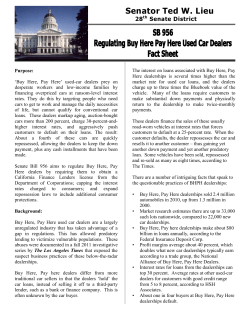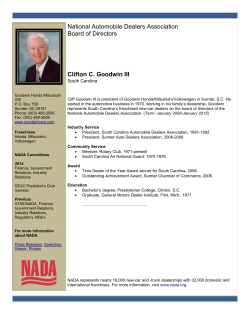
How to pack, if you are a dealer What vintage card dealers
How to pack, if you are a dealer What vintage card dealers bring to a show By George Vrechek Collectors go on vacations and will take a change of clothes or two and their wantlists. When dealers go on a trip, they also have to decide what to bring. The Chicago Sun-Times Sports Collectibles Convention presented by Mounted Memories at Rosemont, Illinois, November 16-18, 2012, provided an opportunity to talk to dealers about what they pack. I asked a non-scientific sample of dealers what they bring to a show, how important is it to have new inventory, what pricing philosophies they have, and what trends they see in the hobby. The Rosemont show had the typical incredible range of notable autograph guests: the 1980 Miracle on Ice USA hockey team, Olympic gymnasts and skaters, Chicago Bears Brian Urlacher and Matt Forte, Shaquille O’Neal, Chipper Jones, Evan Longoria, Reggie Jackson, Rickey Henderson, Eddie Murray, Gordie Howe, Pete Rose, and dozens more. Ruth and Gehrig may even been signing. Dealers at the show range all over the map as to product line and their niche in the market. The dealers Some dealers cater to the fans getting autographs; others sell memorabilia. Most card dealers primarily sell vintage sports cards. They are in the same huge room, but definitely operating apart from the autograph sessions and don’t pay much attention to the autograph process. Vintage sports card dealers take risks all the time in determining what to buy, what to pay, and how to sell. They adjust well to what collectors want, or they don’t stay in business very long. They have to keep an eye on valuable and frequently accessible inventory, compute prices for selling and buying, chat with customers, say hello to other dealers, and maybe even grab something to eat. The dealers I spoke with have all been at this awhile. Pat Blandford of Kevin Savage Cards will remember your name and even your wantlist. Kevin Savage Cards Kevin Savage (Kevin Savage Cards of Maumee, Ohio) has been doing card shows for 30 plus years and has been a dealer at the quarterly Rosemont shows since they started. Pat Blandford works with Kevin as Vice President of Purchasing and Sales. Blandford offered that, when you have millions of cards in inventory, you have to decide what to bring to a show. “Collectors seem to have a sixth sense for detecting new items,” according to Blandford. “We try to vary the inventory and not have the same setup at each show.” They bring different single vintage cards and a few larger lots, groups, and sets to sell at the show. They don’t take the philosophy that they need to have inventory from all major sets at every show. Savage’s pricing takes into account experience and on-line auction results. High-end modern cards tend to have a wider range of possible prices than regular-issue vintage cards. When Savage buys cards, cards in higher demand and quality will exact much higher buy prices than cards which are slower moving. Prices in retail card stores are sometimes higher than at major shows. Show prices often differ, and are sometimes lower, than prices in auctions. Blandford felt the trend in the hobby has been for collectors to get older; fewer kids collect due to the digital age. While this may mean fewer customers, it also provides buying opportunities as collectors age and decide to sell their collections. According to Blandford, it is a fun business. The fun-with-cards approach is apparent in the humorous comments Savage often includes with his SCD auction ads. Mr. Mint, Al Rosen, is hard to miss at any show. Alan Rosen, Mr. Mint Thirty years ago Al Rosen, Mr. Mint,” did 42 shows a year and lugged product back and forth. However today, Rosen does not have millions of cards back at a store like Savage. His specialty is the ability to buy and sell quickly. The product moves. I thought Rosen brought very little to shows. Rosen however brought parts of a recently- purchased Chicago Cub memorabilia collection to this show. He also had a very affordable complete 1955 Topps set ready to go at $1,500. Ideally, Rosen said, he would bring nothing to a show (other than cash) and bring nothing home. No matter what he brings to a show, you can’t miss Mr. Mint since he will take a table opposite the main entrance and keep an eye on anything tucked under your arm, especially shoe boxes. According to Rosen, he has to be like a mind reader, figuring out sellers. Rosen also has the knack for knowing what sells, how quickly, and who buys the big ticket items. Dave Czuba, who works with Rosen, said that Rosen will have a few items available and will also be reselling to dealers and the public at a show, selling items purchased that weekend. Rosen will be happy with a modest margin on products purchased, if he feels they can be resold sooner rather than later. Rosen purchased cards from five people at the Rosemont show; all sellers knew him. He turned around and sold everything he purchased. The high-numbered 1952 Topps find in 1986 was an early example of Rosen’s approach. A Quincy, Massachusetts, man had over 5,500 1952 Topps cards (75% of them were high-numbers, including 75 Mantle cards) fresh from the case. Rosen bought everything, which was a significant investment. He sold most of it within a few months. Many collectors, including this writer, kick themselves for not buying the high-numbers from Rosen when they had the chance. Gem-mint commons were advertised in a 1986 SCD at $65 each. Mint Mantles were advertised at $2,500, and none sold from the ad, according to Rosen. Rosen said he made up card runs from #251 to #407 and sold them for $12,000 per run initially. This type of product doesn’t last forever. Rosen added that it was “great making a living doing something you enjoy.” Hanging onto the cardboard is not the enjoyable part for Rosen, though who added, “Bakers don’t keep their bread and shoemakers don’t keep their shoes.” “Uncle Dick” DeCourcy must have a strong back from moving all the cardboard at his tables. Uncle Dick “Uncle Dick” DeCourcy from Highlands, North Carolina, has been coming to Rosemont shows for at least 10 years, driving a van full of vintage cards each time. DeCourcy brings about everything he has, around 100,000 cards. He takes several tables and tries to maintain a full line of vintage cards in varying grades, in each of the four major sports. Cards are placed in handy, colorful binders and put in numeric order. He prices every card, since he feels some people don’t want to ask for a price. Also un-priced cards slow the process of high-volume selling, if he has to find a book price, grade the card, and quote a selling price each time. Dick’s wife works with him on these trips, and his sons will help when available. There are many collectors thumbing through albums and pulling out cards. DeCourcy needs to buy between shows to restock his inventory rather than letting it run down. He tries to have “several conditions of each card to appeal to all budgets.” Repeat customers find him and he’ll have 10 chairs where customers can sit while going through albums. The challenge then is to continue to resupply the inventory to maintain this wide-range of product. He also has specials involving rows of low-priced stars and commons in trays. The “regular” cards are all priced and in numeric order in albums – what a concept! Kurt Tourdot Kurt Tourdot of Rosemount, Minnesota, has been doing these shows for most of the past seven years. He brings his “front-end inventory,” which roughly translates into vintage cards that are worth lugging back and forth. “To stay in this, you have to constantly evolve, finding different ways to market and sell cards,” according to Tourdot. He feels it is important to have new merchandise at a show and will even skip a show or two, if he hasn’t restocked sufficiently. “I personally see no trends toward one thing or another. Card Collectors are like snowflakes, each unique in their own right.” His niche involves cards in lower grades. He always has a large bargain bin with a wide variety of cards. It is rare for him to sell at even 50% of the full Beckett guide prices. Kurt Tourdot enjoys talking with collectors and embracing the card in less than perfect condition Ron Estes Ron Estes of St. Charles, Missouri, tries not to be all over the place. He brings vintage baseball and football cards. The older and the better the condition, the more he’ll pay and the easier to resell. The trend has been good for Ron with business up in each of the past four years. The Joy of Cardboard Other dealers I talked to had similar variations on the theme. What they bring and how they price and arrange their inventory makes sense to them and has produced success. Their solutions vary, but they learn their customers and what is necessary for them to be successful. The most common theme I noticed was that all of them enjoyed what they were doing – getting paid to handle baseball cards, and some football, and some…. George Vrechek is a freelance contributor to Sports Collectors Digest and can be contacted at vrechek@ameritech.net. This article appeared in the March 22, 2013, SCD; a big OBC thank you to Sports Collectors Digest (SCD) for allowing us to reprint George's article here on the OBC site.
© Copyright 2025









